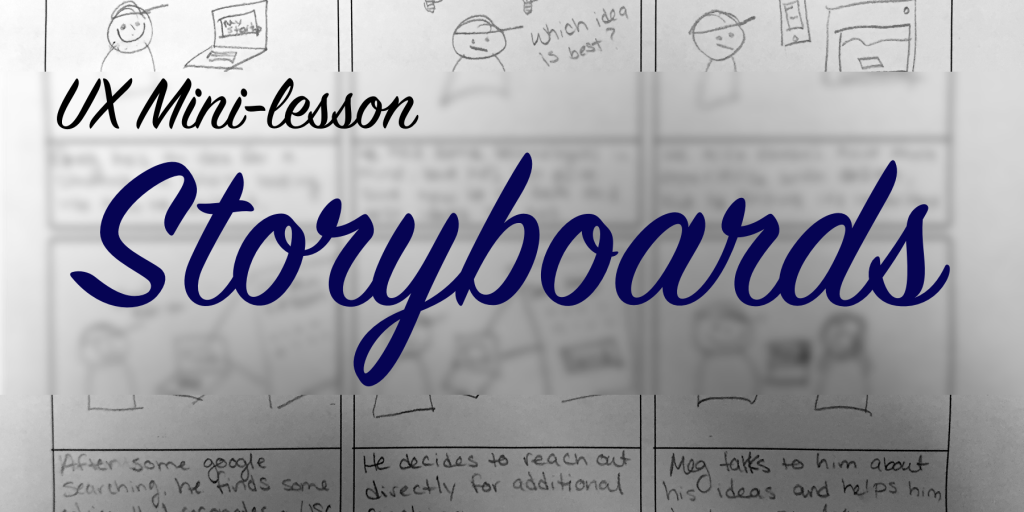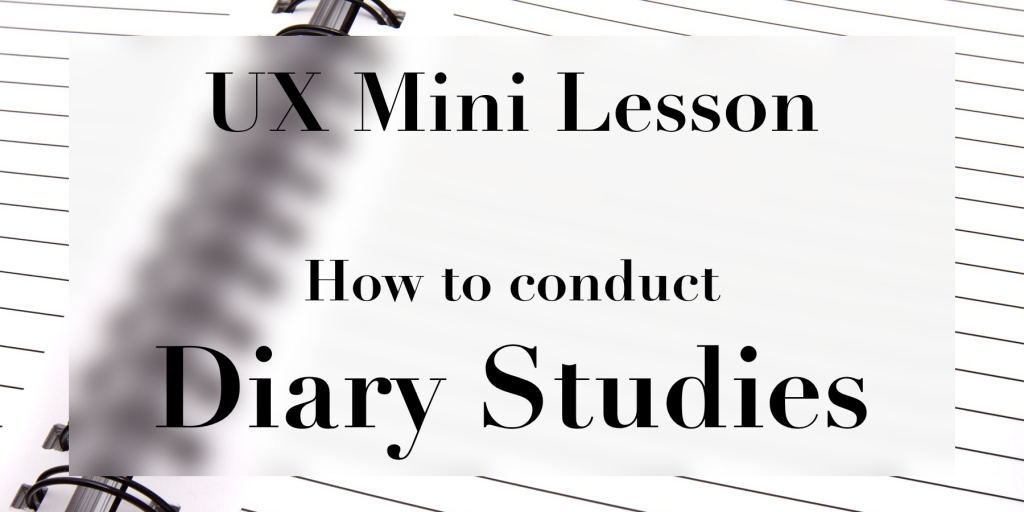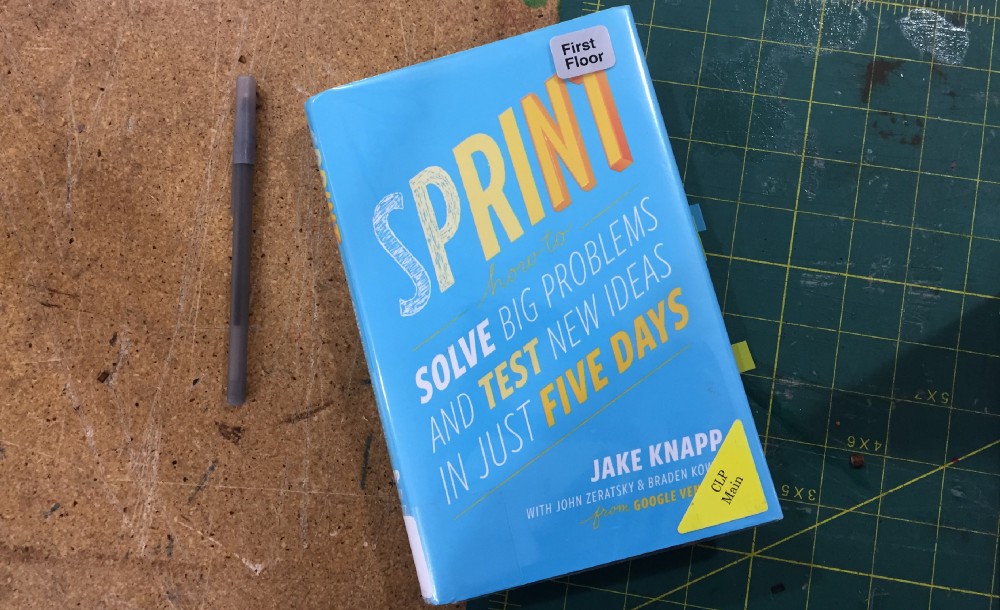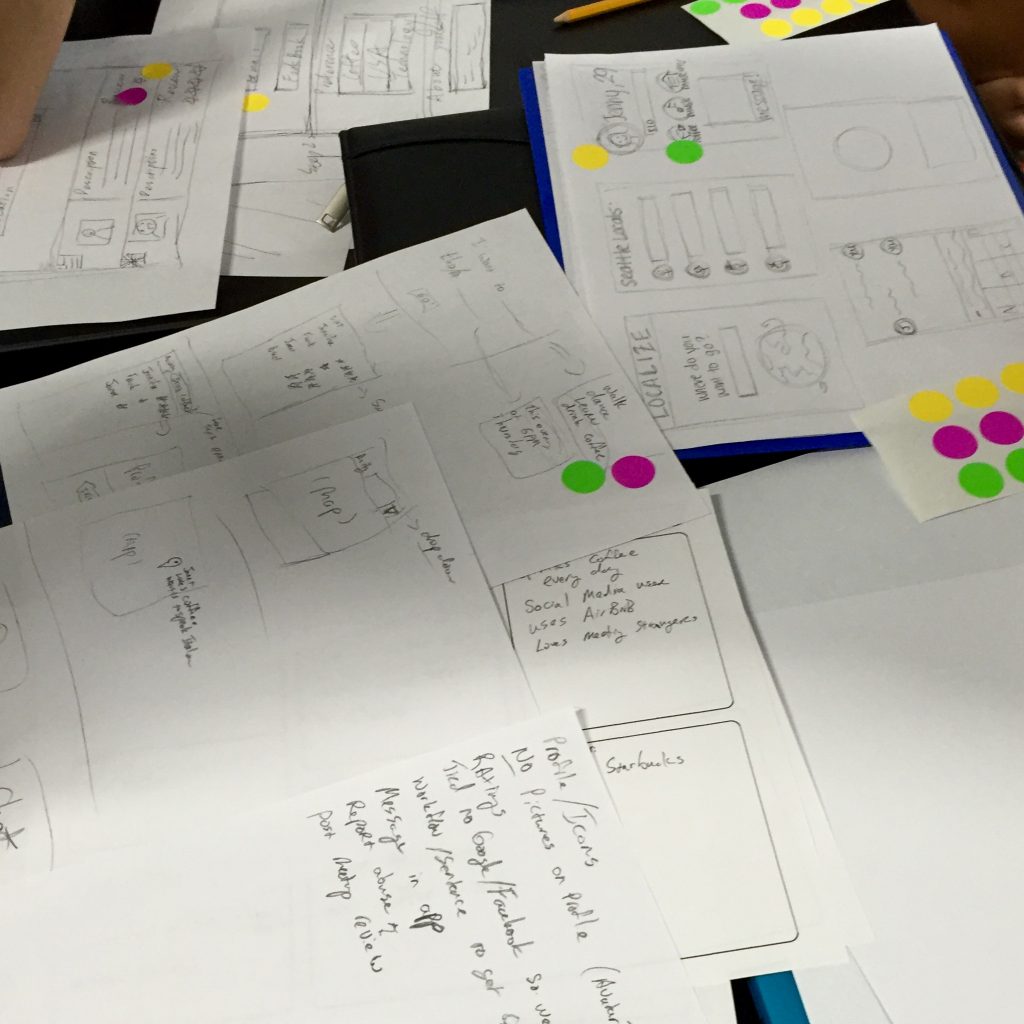Four tools for selecting UX research methods

For every UX problem, there is a UX research method. Well, that might be stating it a little too simply. For any one UX problem you will likely need several UX research methods to unpack it. If we were casting roles for the proverb about blind men and the elephant, UX problems are the elephant […]
UX Mini-lesson: Storyboards

Storyboards are the UX designers’ secret weapon. They can be used in so many versatile ways, but require relatively little effort to make. Storyboards are a powerful design tool because they… convey the “big picture” idea in just a few frames, combine many design elements (personas, requirements, solutions, etc.) into one coherent story, produce assets […]
UX Mini-lesson: Diary Studies

For today’s post I a present a “UX mini-lesson” on how to conduct diary studies. We will cover the value of longitudinal data sets, and strategies to maximize the quality and number of diary entries from your participants.
Get to big ideas fast: Review of “Sprint” by Jake Knapp

Sprint provides a blue print for design-facilitators. It provides a detailed and thorough explanation of how you can take a small team of people and go from zero to prototype in just 5 days. It covers design activities like goal setting, user process mapping, expert interviews, “how might we” requirements gathering, solution sketching, prototyping, and user testing.
UX Foundations Workshop

Back in September, my friend Karen Tang and I taught a UX Foundations workshop as part of the PGH-Tech meet-up group. In the workshop, students were grouped into teams and asked to create think about a design problem in one of four domains: Health, Education, Kids/Family, or Travel. Then they utilized a number of techniques and strategies to ultimately wireframe a solution. In particular, we covered…
UX Mini-lesson: How to conduct user interviews

User interviews are, by far, the research method I use the most. They are relatively inexpensive to conduct yet provide a wealth of information that can be used to guide design. Also, user interviews are a research method that is easy to “get right”. With just a little bit of guidance, even the most novice of researchers can conduct a worthwhile user interview.
Resources for Startups in Pittsburgh

For small business owners, Pittsburgh has a lot to offer. Here are some of the many resources available to Pittsburgh startups.
